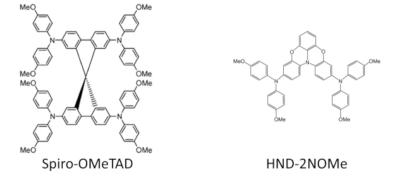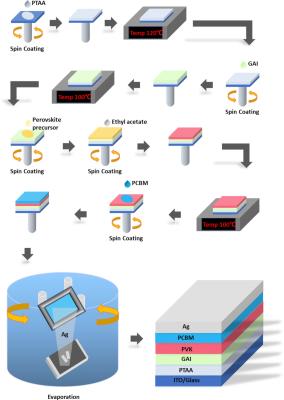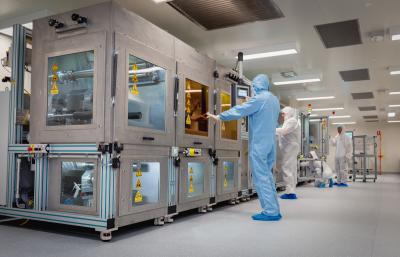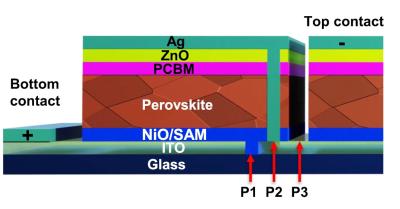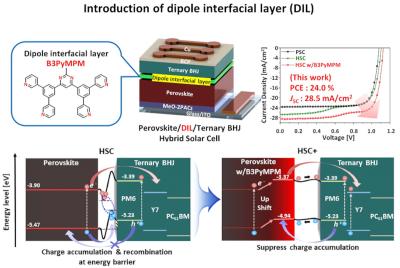Perovskite Solar - Page 3
Researchers design solar bricks made of ceramic pieces and perovskite solar cells for Building Integrated Photovoltaics (BIPV)
Researchers from the Universitat Internacional de Catalunya (UIC), University of Rome Tor Vergata and Université Crenoble Alpes have designed a Solar Brick (SB) based on textile ceramic technology (TCT) and perovskite photovoltaic cells. The new SB can be used for applications in building-integrated photovoltaics (BIPV).
Textile Ceramic Technology (TCT) is an innovative construction system that consists of ceramic units installed in a grid of stainless steel wires. TCT has been patented in 2011. Its main application is to cover roofs, grounds, building façades and more. The team says: "One of the advantages of the system is the reduced time construction, since traditional ceramic claddings systems require a manual procedure on site in where the bricks are placed one by one joined by mortar. Moreover, the large length dimension of the shells makes possible to cover ground, façade and roof with the same element".
Researchers use electron spin resonance to examine performance limitations in cost-effective materials for perovskite solar cells
Researchers at the University of Tsukuba and Kyoto University have studied the internal properties of low-cost materials used in perovskite solar cells that use HND-2NOMe, a replacement hole-transport material to spiro-OMeTAD, using electron spin resonance (ESR) to analyze these materials at a microscopic level.
Chemical structures of hole-transport materials spiro-OMeTAD and HND-2NOMe. Image from: Communications Materials
The results clarify the underlying causes for reduced device performance, despite high local charge mobility, offering critical insights for designing improved solar cells.
New passivation technique improves the stability and efficiency of inverted perovskite solar cells using guanidine iodide
Researchers from China's Tianshui Normal University have reported a grain regeneration and passivation approach that can decrease the recombination loss of the perovskite layer/charge transfer layer interface and the grain border.
Device manufacturing process. Image from: Scientific Reports
The team relies on guanidine iodide (GAI) treatment of perovskite films for this new approach. Unlike most methods that use GAI for post-treatment of the perovskite layer or add GAI into the perovskite precursor solution, this work uses GAI for pre-treatment before spin coating the perovskite layer. It can effectively passivate surface defects and increase the grain size of perovskite films by controlling the crystallization process.
Shanxi Datong cooperates with CATL and others to build the largest commercial perovskite ground photovoltaic project in China
According to reports, Datong City is currently cooperating with companies such as CATL to promote the implementation of a 1.52 MW perovskite demonstration zone. After completion, the project will become the country's largest commercial perovskite ground photovoltaic project.
It was said that the installed capacity of new energy and renewable energy in Datong City has reached 9.29 million kilowatts, accounting for 53.7% of the city's total installed power capacity. It has also focused on promoting the construction of a 6 million kilowatt new energy base project in the northern Shanxi coal mining subsidence area with a total investment of nearly 40 billion yuan. After it is put into operation, it will be able to supply 10 billion kilowatt-hours of clean electricity to the Beijing-Tianjin-Hebei region every year.
Highly passivated TOPCon bottom cells show significant potential for perovskite/silicon tandem solar cells
Researchers from the Chinese Academy of Sciences (CAS) and Zhejiang University have developed a highly passivated TOPCon bottom cell, achieving perovskite/silicon tandem solar cells (TSCs) with high open-circuit voltages (VOCs) and excellent efficiencies.
The structure and performance of tandem devices with highly passivated TOPCon bottom cells. Image by Ningbo Institute of Materials Technology and Engineering (NIMTE)
Numerous defects at the fragile silicon oxide/c-Si interface and the weak field-effect passivation on textured substrates reduce the VOCs of current TOPCon silicon solar cells, thus limiting their application for high-performance perovskite/silicon TSCs. In this study, the researchers prepared highly passivated p-type TOPCon structures and double-sided TOPCon bottom cells on industrial textured wafers via industry-compatible fabrication methods, including ambient-pressure thermal oxidation and in situ plasma-enhanced chemical vapor deposition.
New CSIRO facility aims to take printed flexible solar tech from lab to real world
Australia’s national science agency, CSIRO, has opened a facility dedicated to taking its printed flexible solar technology out of the lab and into the real world, to help meet the growing demand for renewable energy across sectors. The facility received AUD$6.8 million (around USD$4,473,000) funding from Australian Renewable Energy Agency (ARENA) via the Australian Centre for Advanced Photovoltaics (ACAP).
CSIRO’s innovative solar cells are made using perovskites, printed on long continuous rolls of flexible film. This makes them lightweight, portable, and suitable for various applications across urban construction, space, defense, mining, emergency management, disaster relief, and wearables.
Researchers use slot die coating to fabricate perovskite solar cell with 19.17% efficiency
Researchers from South Korea's Jeonbuk National University examined the use of slot die coating (SDC) to make uniform high-quality perovskite films as a step towards large-area perovskite device manufacturing.
Schematic illustration of the perovskite lab cell-sized module. Image credit: Communications Materials
The team found that SDC increased the roughness of the hole transport layer (HTL) interface, which improved the wettability of the surface, enabling a high-quality perovskite film without bubbles or pinholes. A perovskite solar cell based on the film achieved 19.17% efficiency with “excellent” stability results, and a lab cell-sized module achieved 17.42% efficiency.
Researchers develop improved perovskite solar cell using a uniform sub-nanometer dipole layer
Researchers at the Korea Advanced Institute of Science and Technology (KAIST), Yonsei University, Gwangju Institute of Science and Technology (GIST) and Korea Institute of Ceramic Engineering and Technology (KICET) have reported a high-efficiency and high-stability organic-inorganic hybrid solar cell production technology that maximizes near-infrared light capture beyond the existing visible light range.
The research team suggested a hybrid next-generation device structure with organic photo-semiconductors that complements perovskite materials limited to visible light absorption and expands the absorption range to near-infrared. In addition, they focused on a common issue that mainly occurs in the structure and developed a solution to this problem by introducing a dipole layer - a thin material layer that controls the energy level within the device to facilitate charge transport and forms an interface potential difference to improve device performance.
Researchers develop optimization strategies that may pave the way towards industry-compatible, highly efficient tandem cells based on a production-compatible SHJ bottom cell
Researchers from Helmholtz Zentrum Berlin (HZB) and École Polytechnique Fédérale de Lausanne (EPFL) have presented optimization strategies for top cell processing and integration into silicon heterojunction (SHJ) bottom cells based on industrial Czochralski (Cz)-Si wafers of 140 μm thickness.
Schematic illustration of the perovskite/silicon tandem solar cell based on 140 μm Cz-Si. Image credit: ACS Applied Materials & Interfaces
The team showed that combining the self-assembled monolayer [4-(3,6-dimethyl-9H-carbazol-9-yl)butyl]phosphonic acid (Me-4PACz) with an additional phosphonic acid (PA) with different functional groups, can improve film formation when used as a hole transport layer improving wettability, minimizing shunt fraction and reducing nonradiative losses at the buried interface.
Researchers present air-processed efficient perovskite solar cells with full lifecycle management
Before reaching large-scale production and deployment of perovskite solar cells (PSCs), their entire lifecycle - from preparation and operation to discarding, needs to be carefully considered. In a recent study, researchers from Donghua University and Kyushu University used bio-derived chitin-based polymers to realize the full lifecycle regulation of air-processed PSCs by forming multiple coordinated and hydrogen bonds to stabilize the lead iodide and organic salt precursor inks, accelerating the solid–liquid reaction and crystallization of two-step deposition process, then achieving the high crystalline and oriented perovskites with less notorious charge defects in the open air.
The air-prepared PSCs exhibited an efficiency of 25.18% with high preparation reproducibility and improved operational stability toward the harsh environment and mechanical stress stimuli. The modified PSCs displayed negligible fatigue behavior, keeping 92% of its initial efficiency after operating for 32 diurnal cycles (ISOS-LC-1 protocol).
Pagination
- Previous page
- Page 3
- Next page


